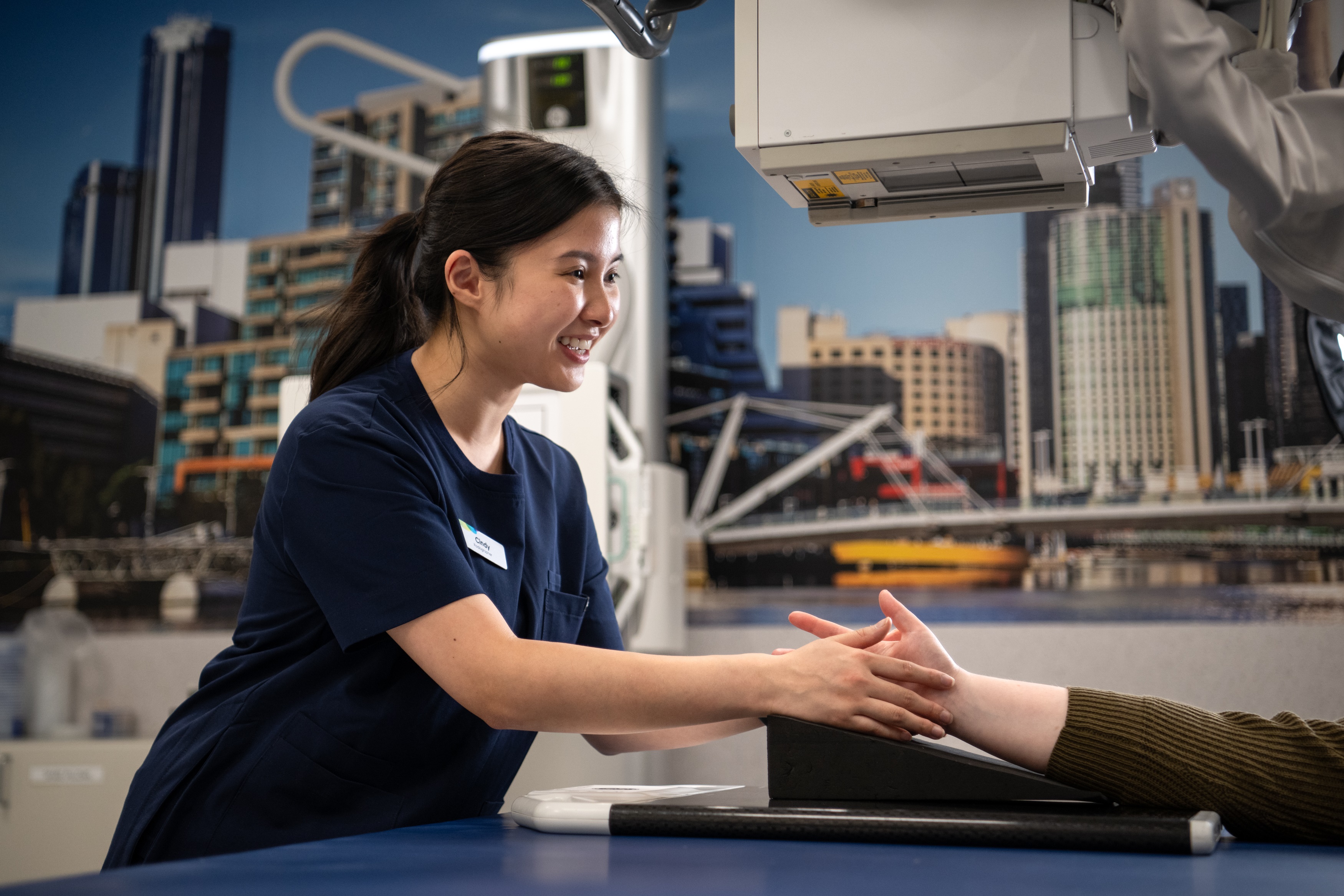World Radiography Day is celebrated on November 8 each year.
It marks the anniversary of the day X-rays were discovered by Wilhelm Roentgen in 1895.
To celebrate the occasion, we spoke to one of our 161 radiographers about the vital role radiographers play in the diagnosis, management and treatment of a range of medical conditions.
Cindy Do is a Grade One Medical Imaging Technologist who joined Western Health in 2023.
Cindy sheds light on the biggest misconceptions about her profession, the most challenging parts of the body to X-ray and a strange object she discovered inside a patient.
 What does a radiographer do?
What does a radiographer do?
"There is a common misconception that radiographers just take X-rays of broken bones, but there is so much more to our profession than that.
We help diagnose and monitor a wide range of conditions and take images to help guide other medical professionals during a range of treatments and procedures."
What's one of the most interesting radiography procedures?
"I find the Barium Meal Test fascinating.
During this procedure patients are asked to eat a variety of food, which have been mixed with barium.
Then images and videos of the patient chewing, swallowing, and digesting the food are taken to demonstrate the function of the digestive tract.
It can help diagnose a range of conditions, such as swallowing disorders, reflux disease and ulcers."
What's the hardest part of the body to take an X-ray of?
"I think the shoulder or a knee because there are so many different angles of rotation and a lot of variability in patient presentations.
When you get a really nice X-ray of these body parts, it's one of the most satisfying feelings.
In radiography, no X-ray image is impossible. It's all about knowing how to make the necessary adjustments and adapt the techniques to capture the required information despite the challenges."
How do you reduce your exposure to radiation?
"Lead blocks radiation. There are so many safety steps in place to protect radiographers. For instance, the radiography room is lead lined. Inside the room, we stand behind a lead wall, with a lead window.
In theatre when we use portable machines, everyone in the room must wear lead gowns and thyroid shields to protect them from radiation exposure. They are really heavy, but there are a lot of straps to distribute and support the weight on our bodies.
As a precaution, we also wear dose monitors to ensure we are not exposed to radiation levels beyond safety limits."
What do you enjoy most about being a radiographer?
"The way we can help diagnose patients or manage disease. There have been so many advancements in knowledge and technology, so the role of the radiographer has changed and will continue to change dramatically.
I also really enjoy working in the Medical Imaging Department at Sunshine Hospital because every shift is different. One day I might be working in the theatre helping with procedures and surgeries, the next I could be in emergency assisting trauma patients, or in an orthopaedic clinic.
We always put the patient first and there is a big focus on reflection. It's amazing to think that at the end of the day, we have helped hundreds of people!"
What's the most interesting object you have found in a patient?
"For me, probably the strangest case was when we x-rayed a patient who had been on a big night out and had accidentally swallowed the plastic pizza table that is usually placed on the top of a takeaway pizza."
Where is your favourite part of Western Health to work?
"One of my favourite areas to work is in paediatric clinic at Joan Kirner Women's and Children's because of the variety of cases.
Taking an X-ray of a child can be challenging because they are often quite scared of the machines, and we are challenged to get creative, for example, we use coloured lights and projections to distract them."
What are the most challenging aspects of your role?
"It can be really challenging when I encounter situations where the patient's health is really severely compromised, such as like a Code Blue. Everyone is on high alert, and it can be emotionally demanding to work under pressure. However, it's really great to see how the entire team of health professionals come together to help the patient.
Taking an X-ray of a patient who is injured can also be difficult because they are often reluctant to move their body for fear of the pain, so a large part of what we do is to empathise with them, validate their concerns and let them know that we are here to support them."
Why did you become a radiographer?
"After finishing school, I wasn't sure what I wanted to do, but I knew I wanted to help people.
Radiography was recommended to me, and I had a few friends who were already doing the course, so I said that I'd give it a shot.
I studied a Bachelor of Applied Science (Medical Radiations) at RMIT.
It was quite daunting at the beginning because in the first year there is was a lot of physics; you need to understand how radiation works and how to use it safely.
But I have never regretted my career choice, I have always enjoyed the continuous learning and growth!
In my final year of University, I got to choose where I wanted to do my internship and I chose Western Health.
I also worked as a Medical Imaging Assistant at Western Health, which was a really great way to ease me into the profession.
I have felt so supported during my time at Western Health, my confidence in my skills has grown and now I'm involved in research into radiation doses."
*Pictured above: Western Health Radiographer Cindy Do.
